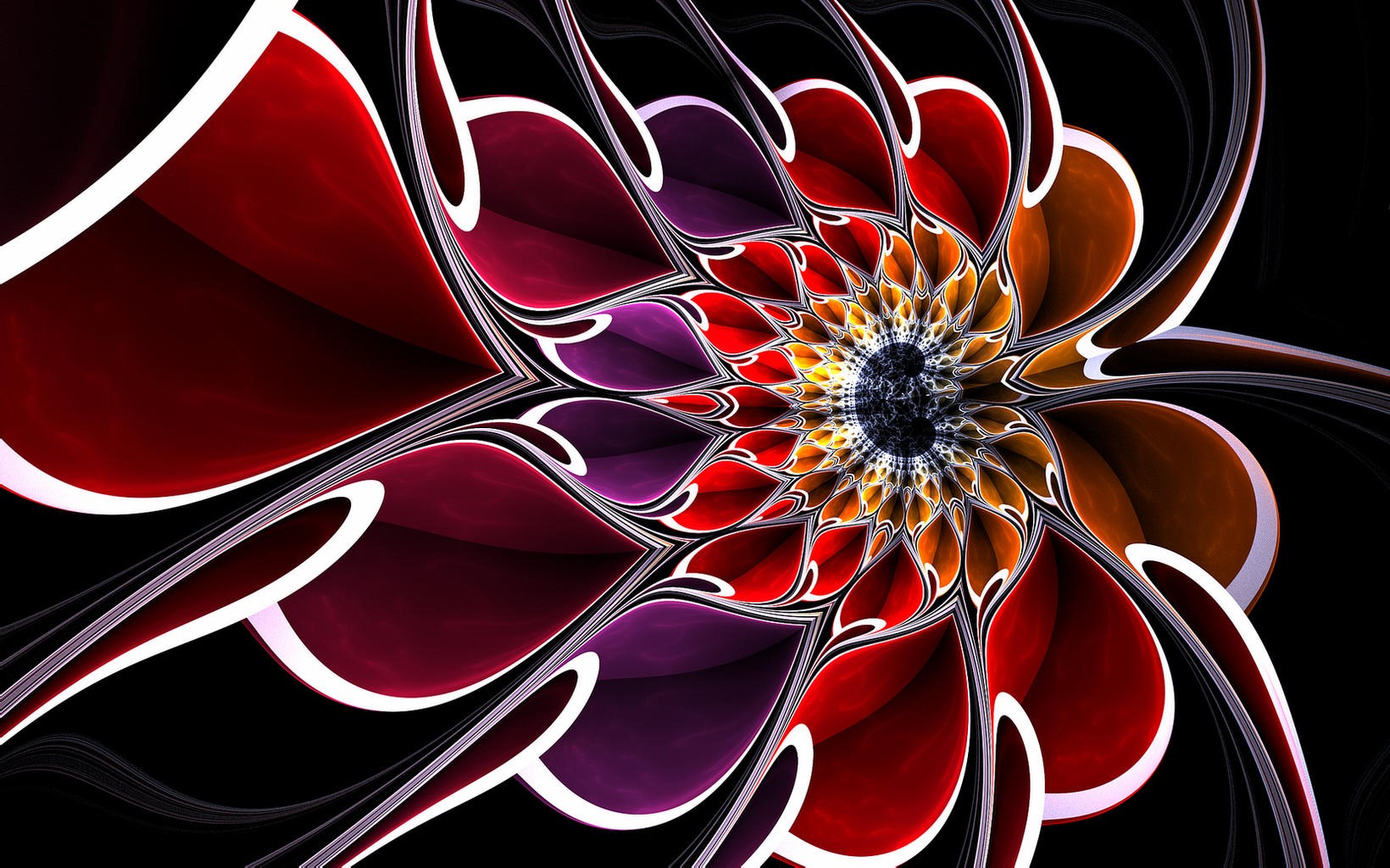1.- The Sādhaka worships the Goddess Kali spontaneously
1.1- The first Mahavidya or cosmic force called Kali
In the tantric pantheon, Kali is mentioned as the first of the ten Great Cosmic Wisdoms. She is the one who “turns the wheel of universal time“.
At the end of the manifested world, time devoured all the universes of the three planes of creation: the physical, astral, and causal universes.
The Great Cosmic Wisdom Kali ultimately devours time itself, which is Kala, and this is why Kali is seen as the prime cause of the creation and destruction of the universe.
The famous tantric scripture Nirvanatantra associates Kali with Brahman, the Supreme, representing both being (existence) and infinite consciousness in manifestation.
If you want to get closer spiritually to this goddess, dedicate this incense from our online store to her.
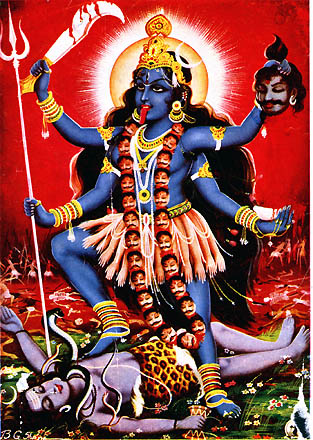
This association has made it possible to worship Kali both from the abstract metaphysical perspective and from a more concrete perspective.
2.- The darkness of the Goddess Kali dissolves everything
2.1- The three processes
The creation of the universe did not happen once, in the past, nor will the universe be destroyed once in the future, and rather at every moment these aspects manifest as flashes creating the illusion of continuity and reality.
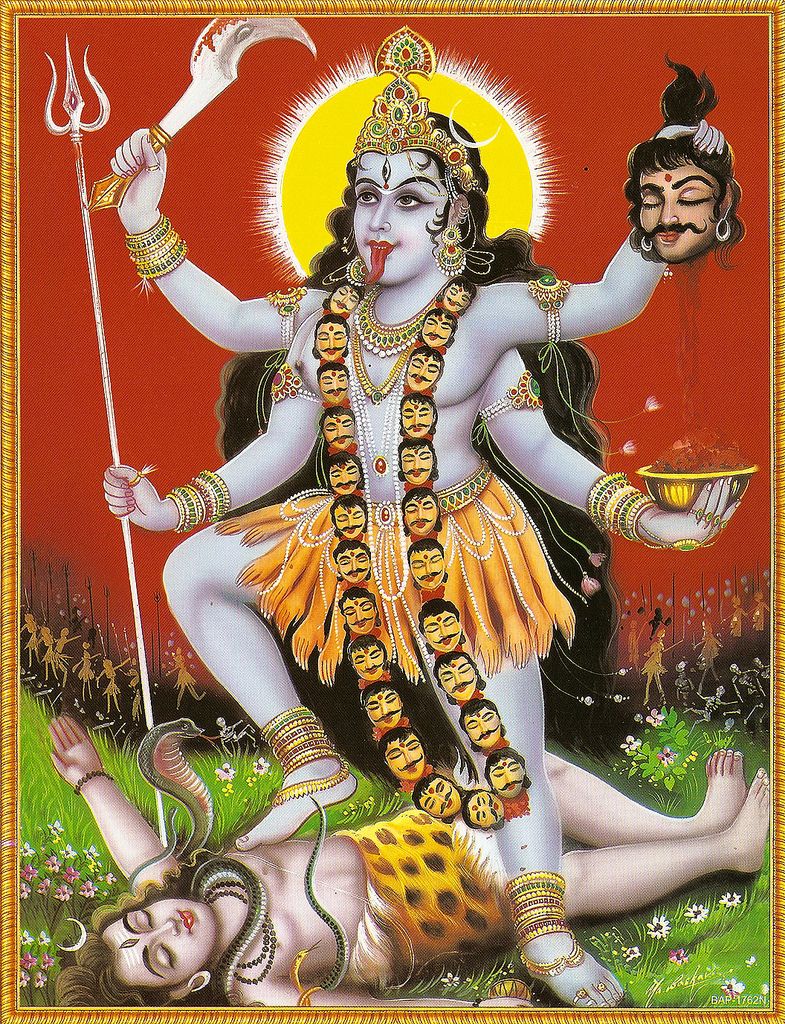
The state of divine ecstasy (Samadhi) implies the disappearance of all mental functions and physical consciousness, in the Supreme consciousness of Paramashiva, which is beyond all duality.
Kali is described as dark as night, dancing on the inert white body of Shiva. This representation reveals the meaning of the two fundamental aspects of reality and, on the other, the static and transcendent aspect of Consciousness (identified with Shiva).
Kali’s action is profoundly evolutionary, as she drives human beings towards evolution, sometimes in a painful or terrible way, depending on the situation from which the aspirant starts.

Shiva is white because it means the infinite divine light (Prakasha). He remains inert because the absence of movement and action reveals the pure, homogeneous and compact Consciousness.
On the other hand, the dance of Kali signifies the dynamic and active aspect of the Divine, and the dark color of his skin indicates that the processes of creation dissolve in the darkness of Kali.
However, Kali performs her actions in divine light and harmony. Those who manage to pass all the tests are truly spiritual heroes, and they will be rewarded with the spiritual grace of Kali.
Infinite divine energy (Shakti) lies potential, but unmanifest, united with Shiva in his purely transcendent state.
Spiritual tantric writings denote this state as Sat-Chit-Ananda (Absolute Existence, Consciousness and Bliss).
3.- The Mahavidya Kali is the time beyond time
Then Kali (as supreme Shakti) takes responsibility for creating the names and forms as well as their evolution.
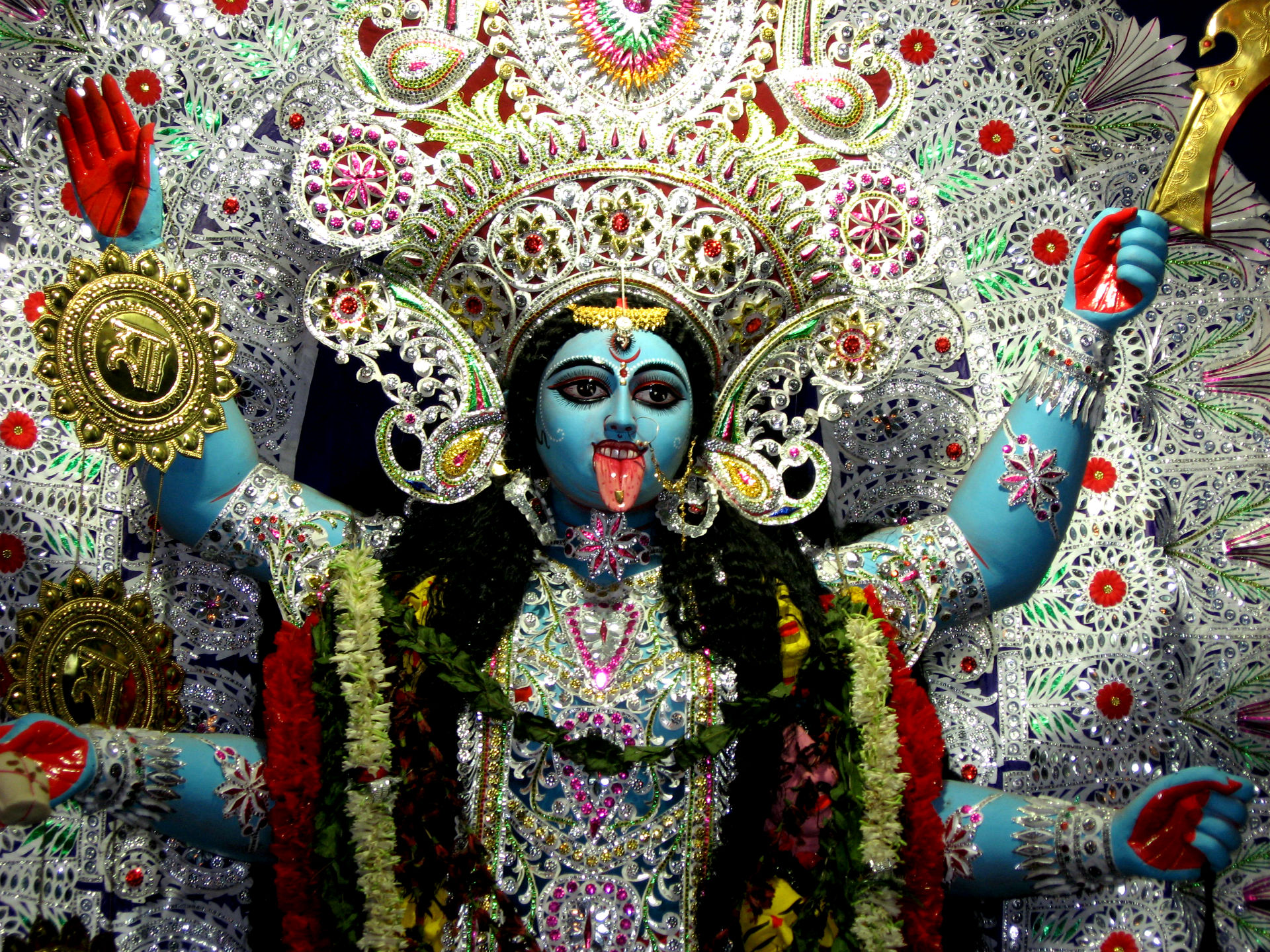
Kali is also known by the name of ADI MAHAVIDYA and ADYA SHAKTI
Kali’s depiction reveals her nudity. This is not a trivial way to represent a deity, but this fact represents the transcendence of all limitations.
His action in the manifested world implies the destructive and at the same time purifying action of time (Kala). This aspect is suggested by the human head that he holds in one of his hands.



When the yogi is more and more immersed in the transcendent aspects, aiming for spiritual freedom at all costs, he will be blessed with the overwhelming grace of Kali.
4.- This Mahavidya destroys your ego so that you can be reborn
One of the most important hypostases with which you can worship Kali is the goddess Durga, the one who defeated the demon Mahishashura. In Hindu spirituality, this demon represents the unstoppable force of darkness, which only Durga and Kali were able to exterminate.
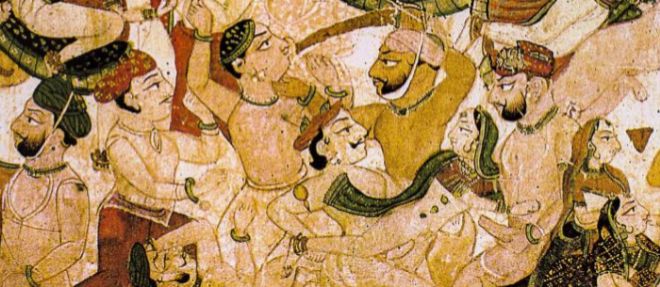
The Vedanta philosophy presents the conception according to which there are Divine Incarnations (Avatara) that come to earth to carry out a deep transformation of humanity.
For the worshipers of the Divine Mother, Durga is the only hypostasis that destroys the evil of the world in its many demonic and satanic aspects.
Hindu mythology describes how the goddess Durga defeats the king of the Ashuras, Mahishashura.
Durga (incarnation of the goddess Kali), grants her support and her help to those who ask for and worship her, so that the spiritual forces develop and prevail over the dark and negative influences of the mental plane.
The spiritual meaning of this myth is that every human being has a dual aspect within them, and these energies constantly fight for supremacy.
Durga is therefore the Divine Light that destroys everything opposite, in the terrible fire of pure Consciousness.
5.- The force of the Goddess Kali awakens Kundalini
The Sadhana recommended for the worship of the Great Cosmic Wisdom Kali involves the effort to purify and activate our Chakras. Kundalini energy ascends from Muladhara to Sahasrara.
The ascension of Kundalini represents one of the characteristic and most important aspects of the worship of this Great Cosmic Wisdom.

Kali’s mysterious influence is so complex and hidden that only pure souls can see through her actions to its true meaning. We come across a frequent depiction of Kali as the Cosmic Mother, surrounded by a host of different gods and goddesses. Lacking dimensions or space-time limits, she adopts different forms and names to satisfy the most secret desires of the one who worships her.
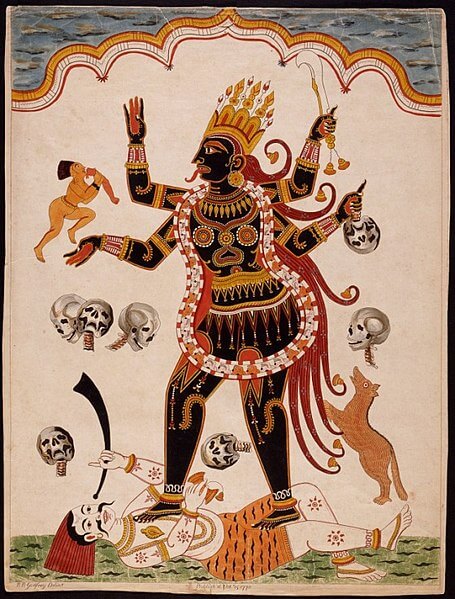
Kali’s mysterious influence is so complex and hidden that only pure souls can see through her actions to its true meaning.
In certain situations, Kali springs into action to destroy what is perverted, weak, or useless. Therefore, we can see the representation of him with four or more arms, in which he holds different objects that are useful in restoring or preserving the divine order of the universe.
In the highest aspects of it, Kali is Divine Bliss itself (Ananda), which is beyond ordinary human perception. It is the nature and consciousness of Divine Brahman itself.

Consequently, there are two ways to worship her: as the great Goddess who grants her grace and blessings to all those who deserve it, and as a sacred energy (Shakti) who grants spiritual freedom (Kaivalya); to help you get inspired with this incense from our online store, Inciensoshop.
6.- The purifying fire that burns the ego and turns it into ashes
All representations of the goddess have the following fundamental elements in common: Shiva’s corpse, his glorious attitude and the color black. But it may differ in other details, which underline her specific role in the universe, characteristic of other particular representations.
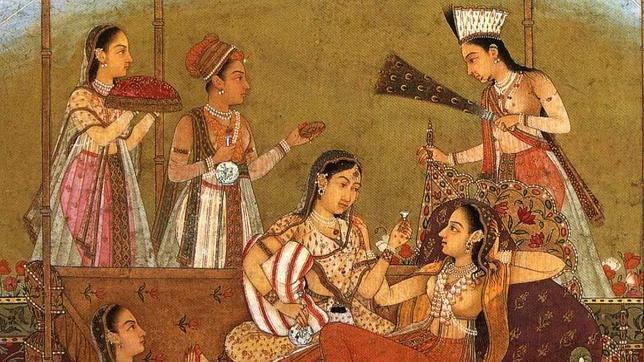
A depiction of Kali reveals her in an imposing pose, meditating in a state of infinite bliss on Shiva’s chest. Another depiction is her as she shoots an arrow, with her right foot bent, into Shiva’s chest.
Both figures (Kali and Shiva) are in a cremation ground, suggesting that all illusory things eventually burn to ashes, burn up in the fires of time, or return to their primordial essential state.
6.1 The physical appearance of Goddess Kali
As usual, Kali’s skin is black, the source of all colors. This also indicates the fact that she is associated with the depths of the divine mystery.
However, she is surrounded by a white halo, a soft light that brings peace to the eye. In this representation, Shiva’s body indicates the fact that the power of God consciousness is also inherent in non-animated matter. Kali’s mouth is open wide and she sticks her tongue out of it, symbolizing the Mudra of devouring or consuming the universe.
However, this terrible and terrifying aspect is softened by the smile of the Goddess, looking at Shiva, the universal consciousness, with infinite kindness, affection and love.

His ironic laugh is for all those who, due to ignorance of the laws of harmony and balance, imagine that they can bypass their spiritual evolution. The Great Goddess has three eyes that are capable of seeing both the outside and our inside, as well as the universes of the past, present and future.
The Great Goddess has three eyes that are capable of seeing both the exterior and our interior, as well as the past, present and future universes.
7.- Through the infinite grace of Kali, the entire universe dissolves in you
Kali has long, disheveled hair, representing the omnipresent graceful power of this Great Cosmic Wisdom.
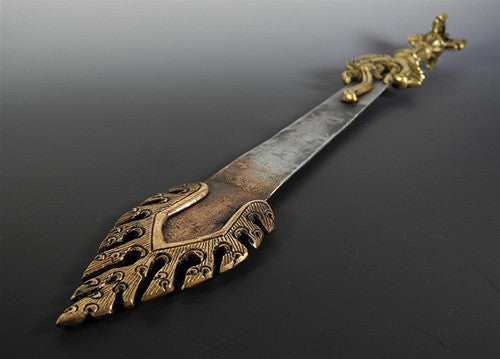
Kali holds a sword (Khadga), whose role is to sever all worldly connections and attachments, so that the worshiper is ready for spiritual freedom.
His benevolence and compassion are underlined by two of his hands making the gesture of casting off fear, and offering spiritual gifts and powers.
Around her neck is a necklace made of skulls belonging to various demons, and other evil entities.

Her naked body is splattered with the blood of these entities, and her earrings are, in fact, two decapitated human bodies. This is the complex representation of Kali in her terrible form, also known as Dakshina Kali or Shyamakali.
In Hindu iconography, Kali appears in other guises, with minor differences in the number of arms, face, and symbolic objects he possesses.
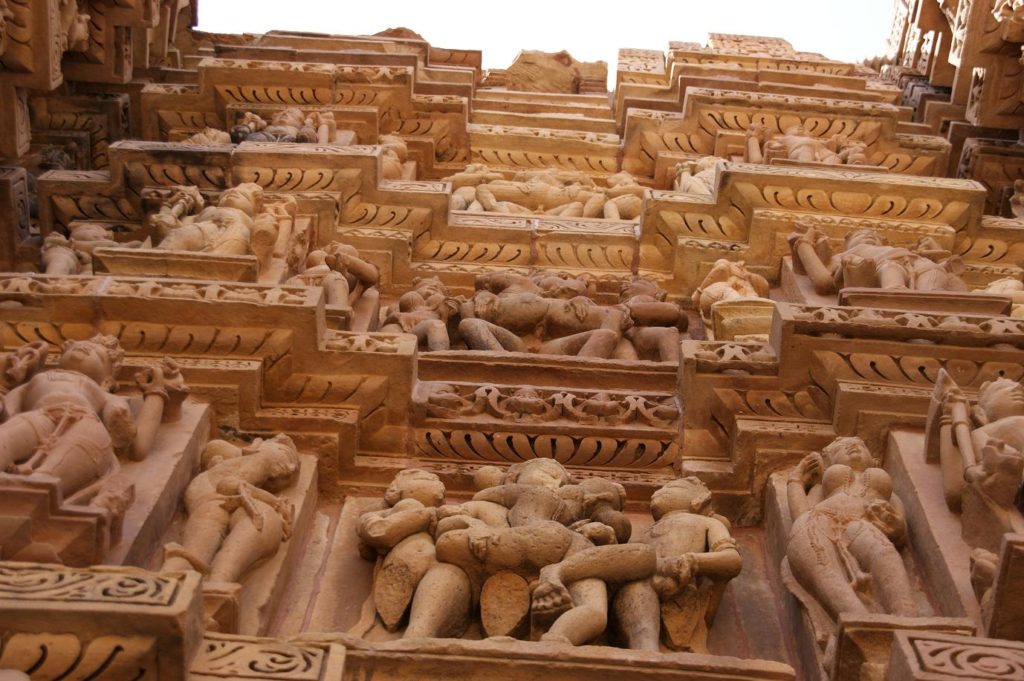
Shamasana Kali, Siddha Kali, Maha Kali, Guhyakali represent the same number of aspects of the Goddess, worshiped in different areas of India.
The form of Bhadra Kali, described in the Tantrasara as a hungry deity, ready to devour any illusory aspect of the universe, with three eyes, four hands holding a skull, a drum, an ax and a trident.
A variant of Bhadra Kali is Chamunda Kali. Unlike the other depictions of Kali, Chamunda Kali wears the fur of a tiger and sits on top of a body.
